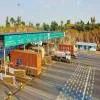
We are creating a platform for the future of skills, says Raman Roy, Chairman, NASSCOM

India to Invite Offshore Wind Tenders in Tamil Nadu, Gujarat
In a major step towards clean energy, the Union government is expected to invite tenders for setting up offshore wind energy projects of 500 megawatts (MW) each in Tamil Nadu and Gujarat by February next year, Union Minister for New and Renewable Energy Pralhad Joshi announced on Thursday. Speaking at the seventh International Trade Fair and Conference on Renewable Energy in Chennai, Joshi stated that the government aims to achieve 500 gigawatts (GW) of renewable energy capacity by 2030, with offshore wind projects contributing significantly to that target. Of this, between 100 GW and 110 GW ..

Loom Solar Plans Rs 10 Billion IPO by FY27
Loom Solar, a leading rooftop and distributed solar company, is preparing to file for an Initial Public Offering (IPO) by FY27, with an estimated issue size of around Rs 10 billion. Founded by brothers Amod and Amol Anand, the company plans to utilise the proceeds to expand its manufacturing capacity and foray into the battery energy storage segment. Speaking to BW Businessworld, Co-founder and Director Amod Anand said, “We are preparing for a larger IPO size of about Rs 10 billion and are currently targeting FY27.” Recounting the company’s modest beginnings, Anand shared that Loom Sol..

Waaree Reshapes Supply Chain to Bypass US Solar Tariffs
India’s leading solar panel manufacturer, Waaree Energies Ltd, is restructuring its global supply chain to navigate steep United States import tariffs and maintain supply to a market that contributes nearly 60 per cent of its total orders. Chief Executive Officer Amit Paithankar said the company is sourcing solar cells — which are later assembled into modules — from countries that face lower export duties to the United States. “If you configure your supply chain well, the high tariffs currently in place on Indian goods can be sidestepped. We are continuing to service our US orders,”..
















